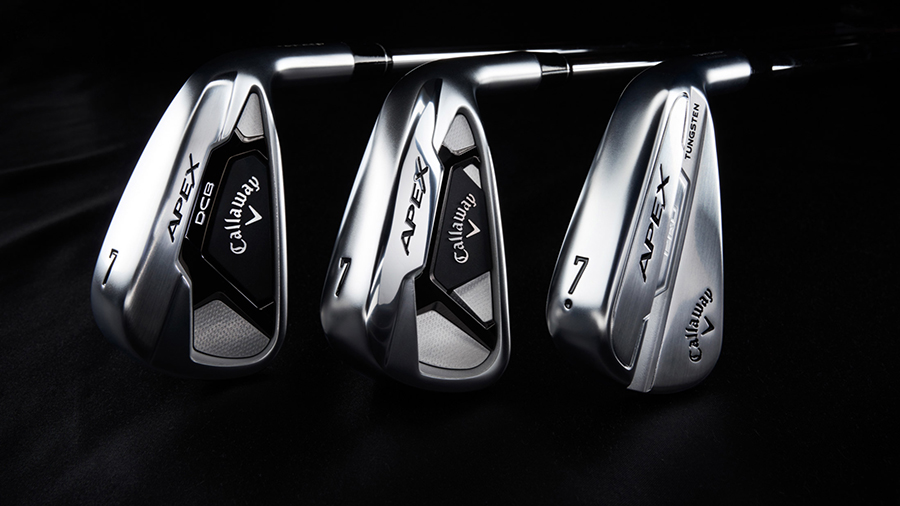Callaway Golf Company’s sales catapulted 208 percent in the second quarter, boosted by the addition of Topgolf and a nearly doubling of golf equipment and soft goods revenue as the sport of golf shows little sign of losing momentum.
In the second quarter ended June 30, sales rose to $914 million from $297 million, far ahead of Wall Street’s consensus target of $744 million. Golf equipment and soft goods revenue increased 98 percent to a record $588 million. Topgolf overperformed with $325 million in revenue.
Income from operations came to $107 million against a loss of $177 million a year ago. On a non-GAAP basis, operating earnings rose to $118 million from $4 million a year ago.
Net income came to $92 million, or 47 cents a share, against a loss of $168 million, or $1.78, a year ago. On a non-GAAP basis, earnings came to $70 million against earnings of $5 million a year ago.
Adjusted results excluded non-recurring charges related to acquisitions and related transition expenses, severance costs related to cost-reduction initiatives, and a Jack Wolfskin impairment charge.

Golf Equipment Sales Climb 91 Percent
Revenue in its golf equipment segment increased 91 percent year-over-year to $401.3 million and 37 percent compared to second quarter 2019 pre-pandemic levels, driven by the continued surge in golf demand and participation, the successful launch of its Epic line of woods and Apex line of irons and the continued success of the Chrome Soft line of golf balls, The sizeable growth reflects the company’s operations and golf retail being significantly impacted by restrictions and shutdowns due to the pandemic for the majority of the second quarter of 2020.
Both golf club and golf ball products saw significant growth year-over-year with golf club sales increasing 105 percent and golf ball sales increasing 51 percent. Segment operating income increased 236 percent due to the increased revenue, operating expense leverage and favorable foreign currency exchange rates
“Demand for clubs and balls remains very high as the sport continues to gain interest from both new entrants, which are driving continued unprecedented growth in package sets, junior clubs and women’s clubs along with core golfers who are playing more than ever and showing strong enthusiasm for the game,” said Chip Brewer, president and CEO, on a conference call with analysts.
He noted that according to Golf Datatech, rounds played in June remained at an all-time high and retail demand remains elevated. Golf Datatech’s hardgoods sell-through in Q2 was up 40 percent versus 2019, and retail inventory levels remain “extremely low” with only 2.2 months on hand at the end of June.
More anecdotally, Brewer noted that private club memberships are also experiencing “exceptional demand,” with waitlists at many clubs across the U.S. and the UK He said, “With more options for activities opened this spring and summer compared to last year, we were cautious that there could have been a potential slowdown in golf participation and/or demand. However, thus far, we’re pleased to report that we’re not seeing this from our seat in the market.”
Brewer noted that the resurgence of the coronavirus Delta variant has not had negative demand implications, but it has caused further supply disruptions from factories based in and around Southeast Asia, primarily Vietnam. Although Callaway was able to shift some portion of its production to other less-impacted factories, the related factory shutdowns will have an estimated $55 million negative impact on second-half revenues primarily in its golf equipment segment and primarily in Q3.
“Although disappointing, I view this disruption as a short-term issue, not one that will have a long-term impact on value for strategy,” said Brewer. “On the positive side, and I recognize this is a glass-half-full view, we now believe field inventory levels will almost certainly stay lower than expected through this year, in many ways, a healthy market dynamic that bodes well for 2022.
He added, “All in all, we are very pleased with the strength of this category and our position in it. We expect to deliver record performance for our golf equipment segment this year and, perhaps most importantly, we continue to believe the outlook for the golf equipment category is highly positive with both a larger total market and a higher embedded growth rate.”
Apparel, Gear And Other Sales Climb 115 Percent
Revenue in the Apparel, Gear and Other segment increased 115 percent year-over-year to $186.9 million driven by a 152 percent increase in apparel sales and an 88 percent increase in gear, accessories and other. All brands rebounded from the year-ago quarter, which was severely impacted by shutdowns due to the pandemic. Compared to second quarter 2019 pre-pandemic levels, revenue increased 21 percent
Operating income for the Apparel, Gear and Other segment increased to $16 million in the second quarter compared to a $12 million loss in the second quarter of 2020, driven by the increased sales and fixed cost leverage and grew $4 million versus the second quarter of 2019.
Brewer said the apparel and soft goods segment exceeded expectations as retail locations reopened globally.

TravisMathew “strongly overperformed during the quarter and continues to see incredible growth as we move into the back half of the year,” the CEO said. The brand delivered 30 percent comp-store growth in its own retail stores versus 2019. Strong growth was seen in sell-through at wholesale accounts and e-commerce. Added Brewer, “Another fun fact is that we are not just seeing brand momentum in the target male audience buying for themselves, as approximately 30 percent of the direct-to-consumer sales that we track are her buying for him. I’m no expert here, but when women are picking the brand for their men, I think it’s a very good sign.”
Jack Wolfskin was a “strong performer” despite facing additional challenges versus other brands given the longer pandemic shutdowns in Europe versus in the U.S. Wolfskin’s stores in Europe almost reached 2019 levels of revenue as they’ve reopened. The outerwear brand also saw a strong sell-through of its spring/summer 2021 line and pre-books for spring/summer 2022 has been strong. Wolfskin’s stores in China have continued to perform well.
Said Brewer, “The team at Jack Wolfskin has done a fantastic job of revitalizing this business and putting us in a strong position to grow on the top and bottom line as COVID-19 restrictions abate in the brand’s key markets of Europe and China and as the brand grows and strengthen appeal.”
The Callaway-branded soft goods business showed strength as well, particularly in Japan. The Callaway apparel business during the quarter took back the formerly-licensed Korean business in-house.
Said Brewer, “With demand levels high across this business segment, we expect to enter 2022 with low retail inventory across all of our soft good brands.”
Topgolf Exceeds Expectations
Topgolf, which was acquired on March 8, 2021, contributed $325 million of revenue and $24 million of segment operating income in the second quarter. Brewer said Topgolf delivered beyond expectations.
“While COVID concerns remain a challenging variable for venue operations, the team put up outstanding numbers even as other options for consumers became available,” said Brewer. “We continue to be invigorated by the momentum of this business brought to both Callaway’s portfolio and to the game of golf.”
Same venue sales percentage versus 2019 levels continued to recover, with Q2 results in the low 90s, up substantially from the low 80s in Q1 of this year.
Results were driven by a mix of strong walk-in sales and continued recovery in the event business. Assuming no major restrictions from COVID-19 upticks, the same venue sales for Q3 are expected to be above Q2 results while Q4 sales are projected to be slightly slower than Q2 due to the corporate events mixed in the latest quarter. Full-year same venue capacity is expected to be approximately 90 percent.
At the end of the year, Topgolf will have 67 domestic venues in operation, including opening six new domestic locations in the first six months. Internationally, Topgolf’s UK venues reopened strongly. Said Brewer, “Overall, the venue business is very healthy, with profitability exceeding our expectations.”
Strong Outlook Provided For 2021
Looking ahead, Brewer said the company still faces numerous macroeconomic hurdles, including supply chain constraints, freight costs, staffing challenges, and inflationary pressure. However, he added, “At the demand level we are experiencing and expect to experience in the foreseeable future, we see these as manageable and expect to still deliver excellent financial results. On the supply chain side, our guidance assumes an estimated $55 million negative impact to our top-line growth, primarily in Q3, to account for current disruptions. On the inflationary side, we have already started taking some price and believe we’ll largely have the ability to take price as needed.”
Callaway expects net revenue for the full year in the range of $3,025 million to $3,055 million against $1,590 million in 2020 and $1,701 million in 2019. The guidance was ahead of analysts’ consensus estimate of $2.84 billion. Adjusted EBITDA for the full year is expected to range between $345 million and $360 million against $163 million in 2020 and $210 million in 2019.
When it reported first-quarter results, the company did not provide specific net revenue and earnings guidance ranges for 2021 given the continued uncertainty related to both the pandemic globally and unsettled market conditions.
For the third quarter, sales are expected to range between $775 million and $790 million, up from $476 million a year ago and $426 million in 2019. Adjusted EBITDA is expected to range between $51 million and $58 million, down from $87 million a year ago and compared with $57 million in the third quarter of 2019.
Photos courtesy Calloway, TravisMathew
















